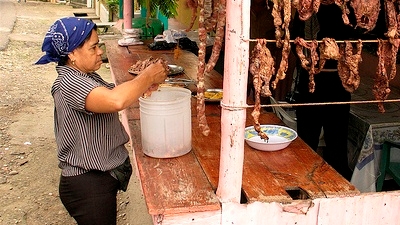Challenge
The Dominican Republic sustained strong economic growth over the past two decades, making it one of the fastest growing economies in the region. Between 2001-11, the economy grew annually by 5.3 percent on average, surpassing the growth rate of the region (3.4 percent). Income per capita also increased between 2000-10 by 45 percent, from USD $2,793 to USD $4,049.
Assessing the impact of this economic growth on poverty was difficult due to the lack of an official poverty measurement methodology. A high-quality methodology to measure household wellbeing is key for evidence-based policy making as it helps identify the magnitude of poverty (i.e. how many people live below a poverty threshold) along with characteristics (i.e. who is poor, where they live, if poverty affects genders, ethnicities, regions, etc. differently).
Instead of using one consistent methodology to determine poverty estimates, the country was simultaneously following several methodologies developed by different international institutions. This often resulted in estimates that were not comparable, moved in opposite directions and painted vastly different pictures of poverty in the country.
Overall, key stakeholders and the public generally distrusted the poverty numbers which were perceived to lack credibility and believed to sometimes be influenced by political interests over policy objectives.
Solution
Drawing from past experiences, the World Bank proposed that the government convene an inter-institutional technical poverty committee to gather key domestic and international institutions to define the country’s new poverty measurement methodology in a transparent and participatory way.
Both domestic and international institutions were included to ensure buy-in and ownership from the government while also providing a seal of approval from the international community.
The poverty committee was a three tiered structure. At the highest level was a small group of high-level officials whose role was to review and endorse the recommendations coming out of the poverty committee. This helped ensure that the technical poverty committee did not operate in isolation from the rest of government.
The second tier was the core technical working group where all topics and aspects of the poverty measurement methodology were debated and finalized for high-level review and endorsement.
The third tier was comprised of the technical and analytical team responsible for responding to committee demands for modeling different scenarios, providing technical inputs, and testing results. This group began as a separate tier, but was later incorporated into the second tier given their technical expertise and perspectives.
Results
The grant objectives were to:
(1) Establish a poverty committee as a forum for discussing poverty issues;
(2) Identify and provide technical inputs and analytical work for developing the poverty measurement methodology to ensure comparability of poverty numbers between 2000-11 and poverty diagnostics (poverty profiles, micro-simulation analysis, etc.); and
(3) Build technical capacity in domestic institutions working on poverty measurement, monitoring and analysis.
In regards to the first objective, the poverty committee successfully convened an influential and collaborative committee with a range of key domestic and international institutions working on poverty measurement.
To achieve the second objective, all inputs to the methodology were validated with consensus in poverty committee discussions and the high-level officials subsequently endorsed and legitimized the process and results. The new methodology and poverty numbers for the period 2000-11 were officially launched at an event chaired by the Ministry of Economy, Planning and Development (MEPyD) and the Director of the National Statistics Office (ONE) at the National Palace on July 30, 2012.
The last objective was achieved, first, by empowering national institutions not previously involved in poverty measurement and diagnostics (such as ONE) by giving them a seat at the table. Second, capacity building and knowledge dissemination efforts were also successful through a series of technical trainings for those within the poverty committee institutions and also for those in the greater poverty community.
Bank Group Contribution
The IBRD supported the Dominican Republic through a USD $250,000 Institutional Development Fund grant. World Bank also staff participated in poverty committee meetings and provided technical support when needed. The World Bank also participated in dissemination workshops and was in charge of a microsimulations workshop aimed at assessing the impact of different policies on poverty.
Partners
Throughout this process, the World Bank played a key role in convening the committee and developing many partnerships. MEPyD was the key government counterpart on this project.
Other domestic institutions on the committee included ONE, Central Bank, Ministry of Labor, Vice Presidency (Cabinet for the Coordination of Social Policies), and Ministry of Health. On the international side, participants included the World Bank, United Nations Development Programme (UNDP), and CEPAL which joined later in the process.
Moving Forward
The goal is that the committee will continue on as a space for national and international institutions to come together to discuss, monitor and debate the intricacies of poverty measurement in the Dominican Republic.
The poverty committee remains informal and has not yet been institutionalized by the government, but discussions are currently underway regarding the preparation of a law or decree to formally institutionalize it.
Additionally, as a result of the trainings, technicians both internal and external to government will continue to monitor the application and results of the poverty measurement methodology for years to come.
